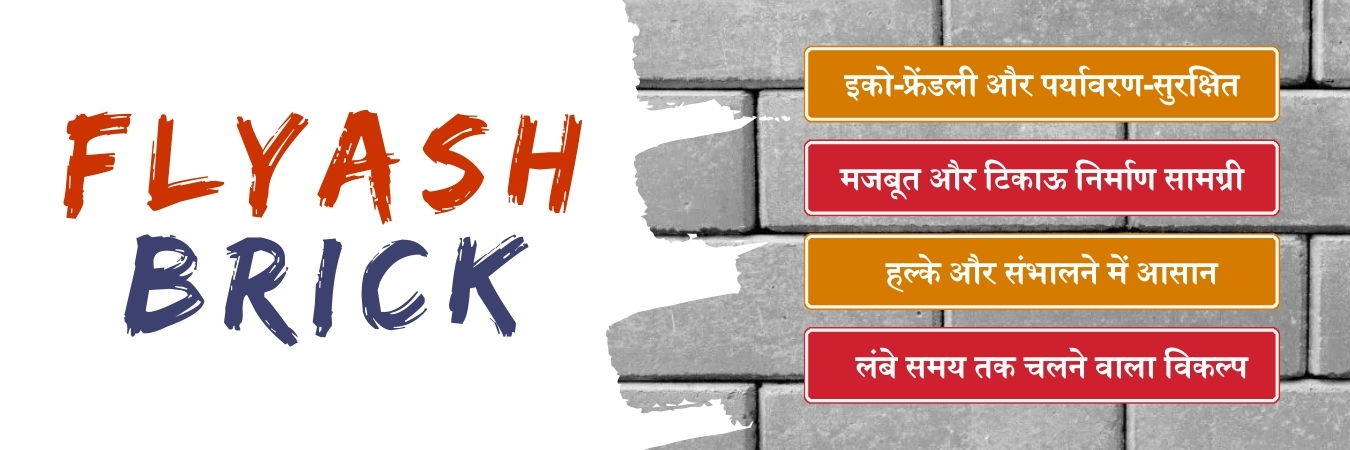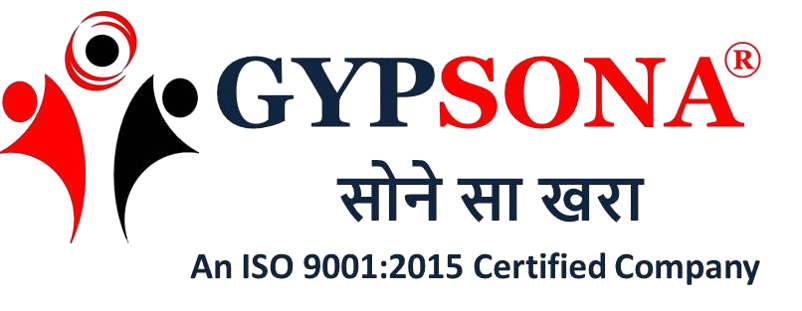The construction industry uses fly ash bricks, cement, gypsum, lime and aluminium powder, and other innovative solutions as sustainable replacements for traditional clay bricks. These products have better strength and uniformity, and result in decreased environmental impact. Gypsona Plaster is a trusted fly ash brick manufacturer in India which provides fly ash bricks and durable cement fly ash bricks for commercial, domestic and industrial constructions all over the country.
Gypsum Plaster Manufacturers Rajasthan

Flyash Brick Manufacturers
Composition of Gypsona Fly Ash Bricks
- Fly Ash – 60%
- Cement – 20%
- Quicklime / Lime Sludge – 10%
- Gypsum – 5%
- Water & Additives – 5%
Manufacturing Process From Ash to Excellence
| Step | Description |
|---|---|
| Mixing | The homogeneous mix is shaped into bricks using precision moulds. |
| Moulding | The homogeneous mix is shaped into bricks using precision moulds. |
| Drying | Bricks are air-dried before moving to the autoclave for high-pressure curing. |
| Curing | Steam curing enhances the strength and stability of bricks. |
| Testing | Bricks undergo strict quality control for strength, finish, and consistency. |
Key Features of Our Cement Fly Ash Bricks
- ⦾ Uniform grey color resembling cement
- ⦾ Smooth finish with sharp edges
- ⦾ High compressive strength and load-bearing capacity
- ⦾ Less water absorption than clay bricks
- ⦾ Eco-friendly, saving natural topsoil
- ⦾ Reduced mortar usage due to perfect shape
Advantages of Using Gypsona Fly Ash Bricks
Compared to Traditional Bricks:
- ⦾ 50% less water seepage
- ⦾ 30% faster construction time
- ⦾ 10% cost saving in plastering
- ⦾ Zero efflorescence (no white salt patches)
- ⦾ Lightweight, reducing structural load
- ⦾ No firing required, hence no carbon emissions
Why Gypsona Plaster?
Choosing Gypsona means choosing excellence, ethics, and environment.
Here’s why we stand out:
- ⦾ Expertise: Decades of experience in gypsum and construction-grade additives.
- ⦾ Quality Assurance: Every batch is tested for durability, density, and finish.
- ⦾ Sustainability: Our process repurposes industrial waste—better for the planet.
- ⦾ Reliable Supply Chain: Serving across Delhi NCR, Rajasthan, and beyond.
- ⦾ Custom Support: Whether you’re a small manufacturer or large builder—we’ve got you covered.
Technical Specifications
| Property | Value |
|---|---|
| Compressive Strength | 9 – 12 MPa |
| Water Absorption | < 10% |
| Drying Shrinkage | < 0.15% |
| Size Tolerance | ± 2 mm |
| Fire Resistance | High |
| Weight | 2.6 – 3.0 kg per brick |
Applications in Indian Infrastructure
Gypsona’s Cement Fly Ash Bricks are widely used in:
- ⦾ Residential Projects
- ⦾ Commercial Buildings
- ⦾ Industrial Warehouses
- ⦾ Road Infrastructure
- ⦾ Schools & Government Projects
The shift towards green construction makes fly ash bricks a key ingredient in sustainable growth. That’s the reason these are widely used in constructions as a promising alternative to the traditional clay bricks.
Customer First, Always
At Gypsona Plaster, we believe a house isn’t just built with bricks—it’s built with trust.
As such, we offer:
- ⦾ Responsive customer support
- ⦾ Competitive pricing
- ⦾ On-time delivery
- ⦾ Bulk order flexibility
Ready to Build with Gypsona?
Let’s shape the future—one brick at a time. Whether you’re scaling up your production or breaking ground on a new project, Gypsona is here to strengthen your foundation.
Contact us today to learn more about our gypsum products and Cement Fly Ash Bricks or to request a free consultation.
